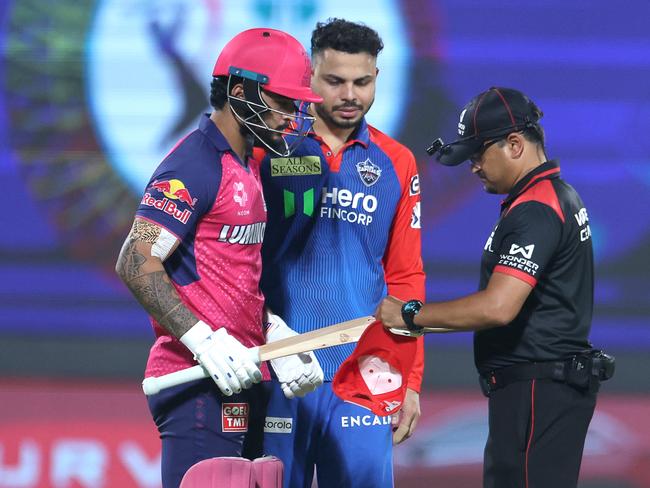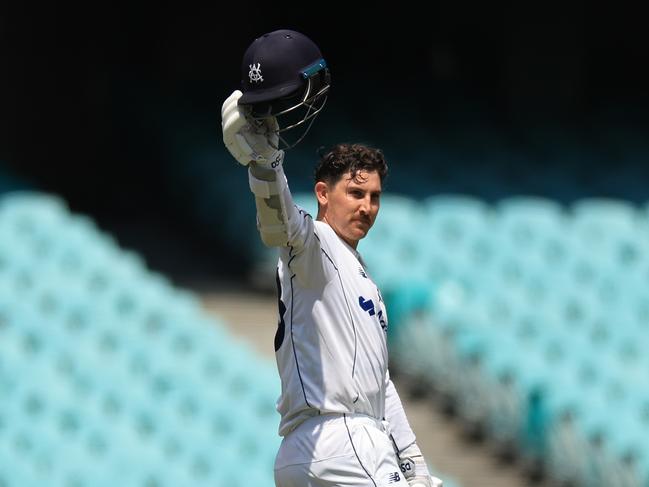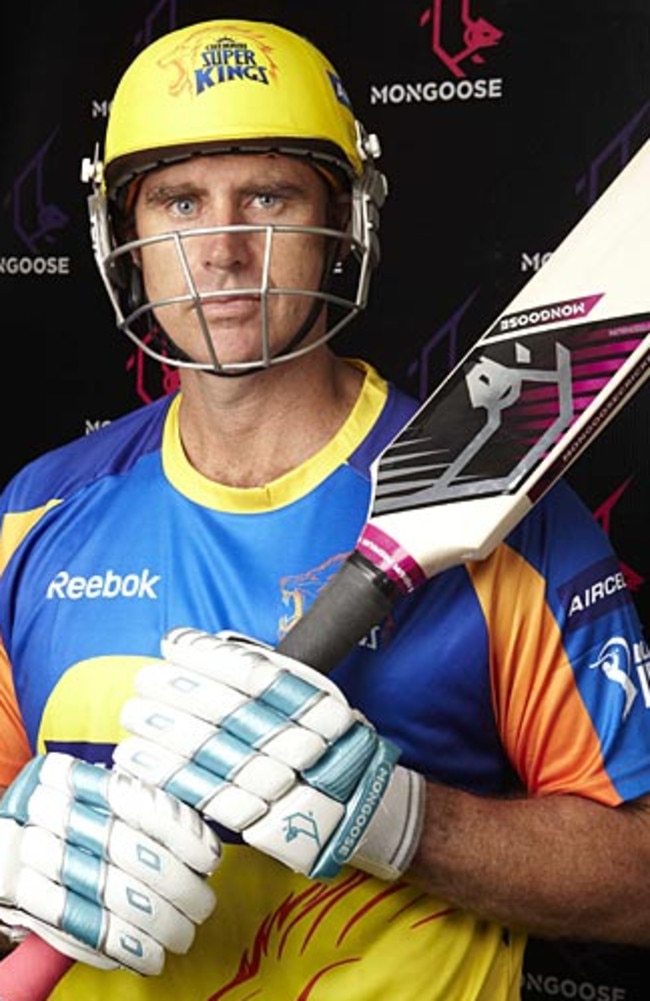The rise of the Big Bats: How IPL is going head to head with bat manufacturers
Several top players have been shamed during the Indian Premier League for using bats that are too deep - but manufacturers are still trying to have final say.
Cricket
Don't miss out on the headlines from Cricket. Followed categories will be added to My News.
Anyone who has been keeping even half an eye on the Indian Premier League in recent days will have noticed the furore over a string of high-profile players walking out to the middle only to suffer the embarrassment of being told that their bats infringe the law and must be replaced.
Any protests have fallen on deaf ears.
Remarkably, three members of the Kolkata Knight Riders side were found to be carrying bats too big to pass through the umpire’s gauge in the same game against Punjab Kings on Tuesday and were obliged to summon legally acceptable replacements from the dressing room.
All three were overseas players, but Indian batsmen have failed the gauge test too.
This is the latest escalation in the continuing battle between batsmen and those who want a better balance between bat and ball. The bowling fraternity, who have long believed that cricket is a batsman’s game, will be delighted.

It is eight years since MCC, the guardians of the Laws, first took steps to limit the size of the bat. Until then, the principal stipulation in terms of a bat’s dimensions was that it could not be wider than 11cm or longer than 96.5cm.
Nothing was stated about depth. Batsmen and bat makers had duly taken advantage: David Warner wielding sledgehammer blades with edges of 5.5cm was only an extreme example.
The shift towards bigger and bigger bats highlighted issues of integrity - players were often mis-hitting balls for six, such was the heft of their blades - and safety, with bowlers and fielders suffering serious injuries from balls struck with ferocious power.

Under the new law, the overall depth, from the spine at the back to the front of the blade, can be no more than 6.8cm, and the edge a maximum of 4cm. Bats are still capable of massive hits, but left unchecked they were only going to become ever more destructive.
However, the law change has not been without consequence. One is the basic need to police it: match officials must carry bat gauges and conduct spot checks to establish whether a player’s bat complies.
There have been several failed tests in the county game, although these appeared to take place once a player had batted, rather than before, as has been the case at the IPL. Mattie McKiernan, of Derbyshire, Nic Maddinson, of Durham, and Essex’s Feroze Khushi have all incurred points-penalties for their sides in the past three years as a result of their bats exceeding the prescribed size.

Such cases have caused heated debate, partly for what some see as harsh punishments for offences from which no obvious competitive advantage was gained. In the Khushi case last season, Essex felt there were procedural failures in the testing that should have mitigated their penalty. No penalties have been applied at the IPL, beyond the public shaming.
Interestingly, bat tests at last year’s IPL were conducted in the dressing rooms in advance of games, but have now been replaced by in-game checks.
No explanation has been given, but as one former umpire said to the Press Trust of India: “The question is, did any player provide one bat for a [gauge] check and use another on the field?”
Dale Steyn, the former South Africa fast bowler-turned commentator, appeared to enjoy the batsmen’s discomfort, posting on social media: “Umpires have a new toy. Batters coming in with their second-choice bats.”

Bat makers have long striven for innovation. In the past, they have produced aluminium bats (famously promoted by Dennis Lillee), bats made of bamboo, and bats implanted with lighter types of wood than the standard willow.
They have made bats fronted with laminates - which has been likened to adding a sheet of steel - and ones, patented by Mongoose, with extra-long handles and a shorter blade. All these are now blocked.
Bats must be made of wood. A handle must constitute no more than 52 per cent of a bat’s overall length (33 per cent is about the norm), covering materials must be no thicker than 0.1cm and any protection on the toe must not exceed 0.3cm in thickness.
Many changes in the shape of the blade were aimed at removing, or redistributing, weight in efforts to maximise the “sweet spot” - the area of the bat out of which (all being well) the ball is usually struck.

One of the best known of these was the Gray-Nicolls “Scoop” with which Brian Lara scored his 375 against England in 1994.
The battle to save weight was transformed around the turn of the century with the development of kiln-drying, which removed moisture from the wood and created scope for the blade to be bigger without adding ounces (typically anything more than a 3lb bat has proved difficult to wield).
This led directly to the Warner-type monster bats. The problem with kiln-dried bats is that they tend to crack or break.
This may not worry an international player sponsored by a leading maker, but club players may not want to pay about pounds 700 to pounds 1,000 for a top-end bat from Gunn & Moore, Gray-Nicolls or Kookaburra for its life to be short.
Most manufacturers now produce different bats for different categories of customer and MCC, conscious of the cost implications, permit certain types of bats - such as ones containing laminates - for young recreational players even though these would not be allowed in the professional game.
Some insiders feel that the 2017 changes inhibit creativity.
“The biggest thing the bat gauge has done is slightly ruin the art of bat making because it’s limited what people are able to do,” said Anton Hotham of Millichamp & Hall, who used to make bats for Nick Compton, the former England batsman, with a heavily concave front and deep edges and a spine height well beyond what the gauges now allow.

Baseball has had a revolution in bat making, with the emergence of the “Torpedo” bat, developed by a manufacturer in collaboration with the New York Yankees. The bat is tapered at the tip with more of the mass shifted closer to the hands, with the aim of creating a more accessible sweet spot. The change breaks no rules, but the only rules are that the bat should be no more than 106.7cm in length and no wider than 6.6cm. But a West Country company, World Class Willow, run by Mike Kennedy, is gaining a reputation for developing high-class bats using a pressing method that gets more wood into the bat than normal. “I’ve had some good bats, but they just don’t compare to the stuff he [Kennedy] is putting out,” Lewis Gregory, the Somerset captain, told The Analyst Inside Cricket podcast. Such is the demand for English willow around the world, and such are the environmental considerations, that some makers anticipate that many bats in the amateur game will soon have to be made of composite wood.
This article first appeared in the Times and has been republished with permission.
Originally published as The rise of the Big Bats: How IPL is going head to head with bat manufacturers


